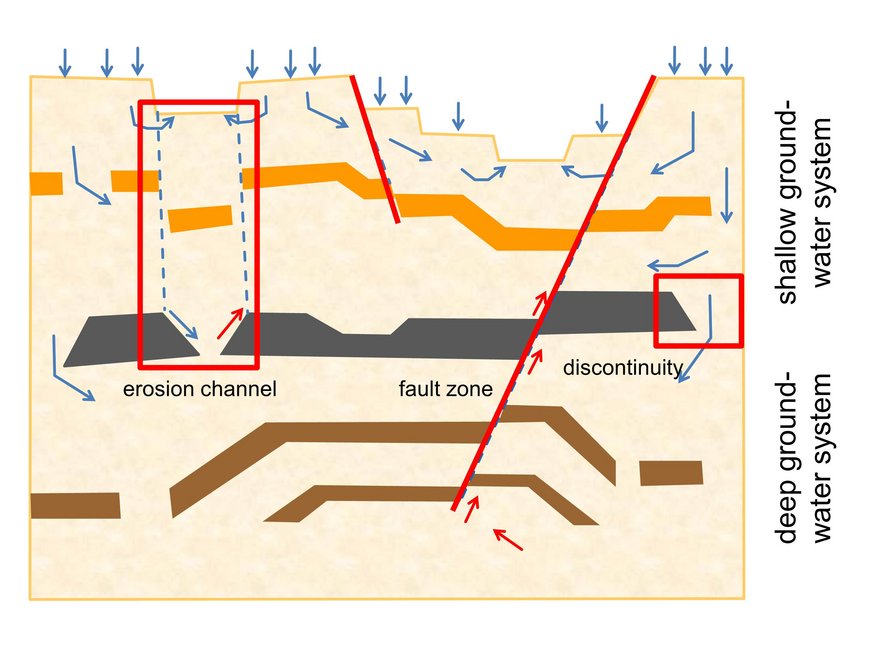Groundwater - Raw Material and Resource
Investigations by the UNESCO predict that already by the year 2050, half of the drinking water on Earth will be contaminated by salinization or the input of anthropogenic pollutants. This emphasizes the importance of prevention and remediation for groundwater protection. Sustainable and responsible management of groundwater resources must be given utmost priority, if nothing else to avoid water crises and water conflicts. Here, the utilization of georesources in deep groundwater systems is of great importance, because it can always have an effect on the shallow groundwater systems. The hydraulic connection between the two groundwater zones (shallow and deep), as well as existing migration pathways (fault zones and discontinuities in aquitards) have not yet been sufficiently or at all taken into account or studied.
In many areas, salt and fresh water are separated by large-scale regionally occurring aquitards (formations with very low hydraulic conductivity; in Berlin and Brandenburg it is the Rupelian clay), and the occurrence of fresh water is therefore often restricted to a thickness of a few 100 metres. The presence of such aquitards divides the area into a shallow groundwater system (fresh water) and a deep groundwater system (saltwater). The saltwater at greater depths does not participate in the surface-near water cycle, or only does so to a limited extent. However, because the generally regionally occurring aquitards have discontinuities and fault zones, along which the fresh water can reach the deep groundwater system and saltwater can migrate into the shallow groundwater systems, there is a hydraulic connection between the deep and shallow groundwater zones (Figure 1). The hydraulic head difference (water pressure) at the transition between salt and fresh water (the aquitard) controls the dynamic equilibrium. The interaction between shallow and deep groundwater systems has been proven by geochemical and isotopic analyses and confirmed by numerical simulations. However, the dynamics of the salt-fresh water boundary are not completely and thus insufficiently understood.
A new field of research is the evaluation of the influence of the utilization of georesources in deep groundwater systems (e.g. CO2 storage in saline aquifers) with regards to the hazard to fresh water resources in shallow areas. This will be a key aspect in the future for sustainable groundwater management. For this reason, the central purpose of Section 3.4, as part of the GFZ German Research Centre for Geosciences (GFZ) and the Helmholtz Association, is the assessment and modelling of the interactions between shallow and deep groundwater systems, as well as the long-term comprehension of local, regional and global changes.


